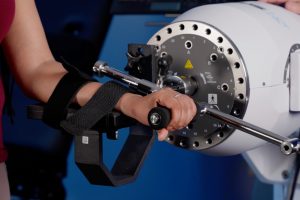-

Active vs Passive Exercises During Rehab: Interventions and Strategies for Optimal Patient Outcomes
CategoriesTransform your patient rehab outcomes. Learn how active vs passive exercises impact neuroplasticity, patient engagement, and long-term independence goals.
-

Discover how to measure, test, and strengthen wrist flexion and extension using clinical tools, functional exercises, and targeted rehab protocols.
-

Accelerate your recovery with soccer rehab exercises and advanced rehabilitation tools designed to build strength, restore mobility, and prevent re-injury.
-

Explore top occupational therapy equipment for stroke rehab designed to assist stroke survivors in regaining mobility and performing everyday tasks.
-

Master your tennis performance with these expert-approved tennis exercises. Build strength, improve agility, and stay injury-free with these proven workouts.
-

Pinch strength plays a crucial role in daily tasks, from self-care to sports, yet it often goes unnoticed until weakness sets in. This article explores the importance of pinch strength, effective exercises to improve it, and advanced rehabilitation tools like the PrimusRS that enhance therapy outcomes.
-

Learn how to measure hand grip strength, track progress, and enhance therapy outcomes with personalized grip strength exercises. Enhance injury recovery, build strength, and help patients regain functional abilities with the PrimusRS' advanced grip strength testing and treatment protocols.
-

“To really get where we need to [in balance training], you need to add the interactive factor, the neurological benefits, and the visual stimulation,” says Sims. According to Sims, the Alfa balance training equipment provides visual stimulation, promotes high repetition, increases patient engagement, eliminates compensation patterns, and fosters neuroplasticity.




